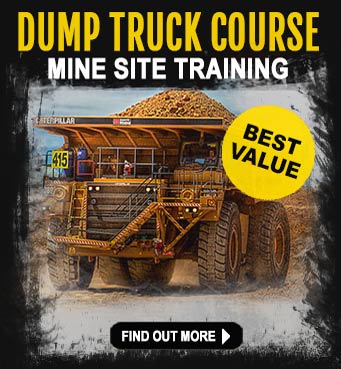Mining Technology is changing the way we work – be prepared for the high-tech jobs of the future
Mining in Australia has evolved into a sophisticated and high-tech industry, employing the latest computer-driven technology and software to drive down costs and improve efficiency.
With the trend in rolling out new technology in the mining sector – what does the future hold? Are we seeing the end of mining jobs and being replaced by robots and computers?
Whist the reliance on manual labour has seen a decline over the last 2-3 years, there is good news for those who see the transformation of the mining sector and realise that immense opportunity still exists. However, like most technologies, the focus for workers is on up-skilling and to choose the right profession that will be in demand in the future.
Future growth in mining equipment technology forecast
One of a more recent mining survey predicts a new era of jobs in safety, maintenance and productivity related technology.
In this report by Timetric, it was said that; “A substantial share of Australian mines have already invested in environmental monitoring, fleet management and predictive maintenance technologies, with tyre monitoring, collision avoidance and remote control/machine automation to be the key areas for future investment,”�
Over 100 mine managers in Australia were surveyed to discover which of 12 different types of mine site technologies they have invested in already and of the emerging new technology, which ones did they have their sights set on.
These technologies included fleet management, environmental monitoring, energy management and collision avoidance technology. There was also renewed excitement in the latest high-tech products such as aerial surveillance using drones as well as the benefits of heightened safety awareness that comes with new wearable technology.
The results show about 88% have invested in environmental management technologies, followed by vehicle and mobile equipment management on site.
“Five other technologies in which more than 80% of respondents’ have invested are fleet management (85 per cent), predictive maintenance (85 per cent), tyre monitoring software (83 per cent), scheduling and optimisation of rosters (81 per cent) and technologies that reduce collisions on a mine site, especially those that occur at night (80 per cent).”�
Given the trend in autonomous truck investment, over the next two years, many managers are focussed on tyre wear and performance monitoring, collision avoidance and proximity detection, and remote control and machine automation technologies.
Improvements in technology can change the way Australian mining companies improve operational safety and manage their costs
It’s expected that over the next two years, 92 percent of Australian mines are predicting tyre monitoring technology to be standard across the entire fleet. In terms of collision avoidance technologies, some 90 % of manager said this was a high priority and finally, when it comes to remote control and machine automation on site, 70 percent said they would be working towards a total solution.
In a parting statement, Timetric said it is critical for companies to respond quickly and adapt to the latest technology. How they adapt is crucial for success in a mining sector that has been facing subdued activity across the board, especially in areas of capital investment in equipment and reducing operational expenses.
High-tech mining jobs
With Australian mining becoming more and more reliant on automation, there is a new era of mining jobs on the horizon for those who have the vision to see them coming. It’s no secret that manual labouring jobs in the mines are becoming more difficult to get, because machines are taking over in a big way.
Take underground longwall mining for instance; it’s thought that over the next few years, underground mining will account for around 40% of Australian mining operations as mining companies see richer deposits that run deep into the earth. It’s thought that in future, there may be only a requirement for 2-3 men to operate a complete longwall.
So what can mining workers hope to achieve from the new wave of automation? Driverless vehicles and automation are driven by mechanical means and told when and how to do it via computer software. Vast data networks traverse Australia linking remote mine sites to operational headquarters many thousands of kilometres away.
Take Fortescue Metals Group, BHP or Rio Tinto – who operate huge mining operations in the Western Australian Pilbara region. Much of the activity on their mine sites is controlled from Perth, where teams of IT and control room specialists manage entire fleets of excavators, haul trucks and trains some 3 kilometres long.
Given the pace at which technology is developing, we have to re-think the types of jobs that will be available in the future. As we see it, specialist technicians who can diagnose faults and fix electronic equipment will be in high demand. This means for workers such as electricians, they have the opportunity to up-skill into electronics and data networks. Current diesel fitters will still be required to perform maintenance on diesel and electric trucks and other vehicles and plant, although a focus on up-skilling in areas of electronic maintenance systems is highly recommended. Looking at the Timetric report, it’s evident that plant maintenance scheduling will be fully automated, yet people are still needed to perform servicing and upgrades of vehicles.. Try designing a robot to replace a diesel engine crankshaft out of a CAT 797B or the Komatsu 930E – the sheer size of these vehicles means workers are still required.
Whatever your current work situation, the future is racing towards the mining sector at lightening speed. Make sure you explore the many opportunities for skills upgrades with a focus on technology and electronics.



